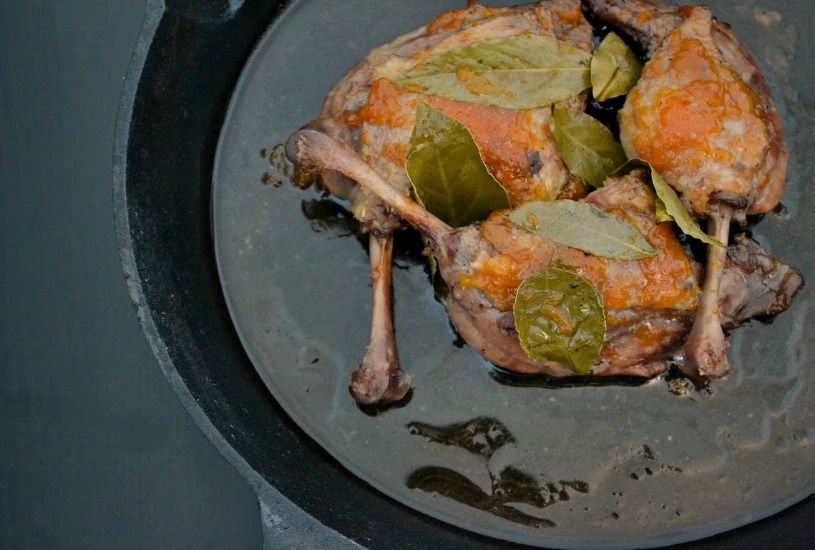Rose Veal is more tender and has a more delicate, subtle flavor than beef. It can be described as “lighter,” “gentler,” or “mellower” in flavor, yet it is anything but bland. Our Rose Veal simply has its own kind of pastured flavor, built from the animal’s diet of milk, pasture and a very limited amount of grain.
The meat is generally lean, and should not be overcooked. Brining the meat is critical for cuts that are hot roasted or grilled, like chops, rack of veal, or shoulder roast. Don’t be intimidated, brining is actually quite easy and makes your veal chops significantly more tender, succulent, and much more forgiving of overcooking.
Brining Rose Veal (or other meats)
Make enough brine to cover your meat. The volume of liquid needed depends on the vessel you are using, but the only important thing is that the meat is submerged and the weight of salt is correct. When we refer to a “X percent brine”, we are talking about the percentage of salt, by weight, relative to the amount of water.
For a 3.5% brine, use 35g salt in 1L water.
For 5% brine, use 50g salt in 1L water.
You can add other flavorings to the brine such as spices, herbs, or sweeteners. We like a 3.5% brine, but if you like your meat a bit saltier, you can go up to 5%.
For smaller cuts like chops, you’ll want to brine about 8 hours. For a large whole muscle roast, you’ll want to brine 12-16 hours. You should brine the meat in the fridge.
After brining, remove the meat from the liquid and discard the brine, then pat the meat dry with a paper towel.
Can I follow any veal recipe?
If you’re following a stewing or braising recipe, yes. If you’re grilling or roasting over high heat, remember that this Rose Veal is lean and should be brined first. After brining, you can go ahead with any recipe for conventional veal. Meat from these pastured- calves is more similar to grass-fed beef or heritage pork than conventional veal, so you might try recipes for these meats as well.
What’s the best way to use Ground Veal?
The classic use for Ground Veal is to cut it into your ground beef for meatballs, burgers, or meatloaf. The flavor is milder than beef, so when used alone, we recommend going heavier on the seasoning that you would with ground beef. You’ll also have great results mixing beef, veal and lamb for the foods listed about.
Ground Veal is also excellent for dumplings, tortellini and other filled dough dishes, especially ones where beef is a bit too “heavy” of a flavor.










